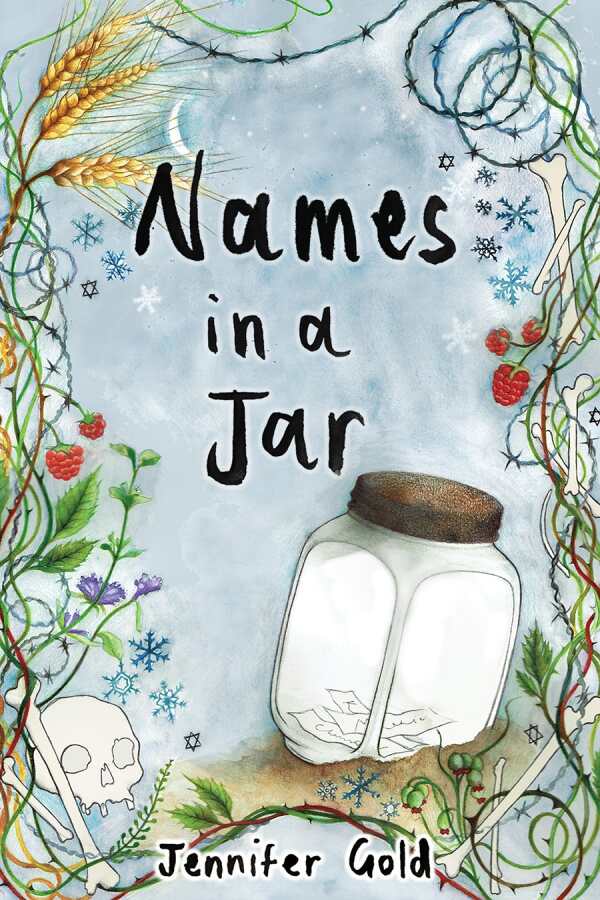Names in a Jar
Family, identity, and loyalty are at stake in Jennifer Gold’s historical novel Names in a Jar, a coming-of-age story set during the Holocaust.
Lina Krawitz wants to be a storyteller and writer, but when her mother dies while giving birth to her sister Anna, she focuses all her attention on keeping Anna safe. Under Lina’s watchful eye, Anna grows up to become fascinated by medicine and science, devouring all the books she can find in their father’s bookshop and dreaming of becoming like her hero, Marie Curie.
When Nazi Germany invades Poland, the sisters’ life falls apart. The girls are forced into the Warsaw ghetto. Determined to protect Anna, Lina seizes the opportunity to move her out of the ghetto and into hiding with a Catholic family. Soon after, Lina is deported to Treblinka. In their new environments, Anna and Lina forge fresh identities. At great risk to themselves, they fight to survive in the hopes of one day being together again.
Told from the perspectives of Anna and Lina over the course of World War II, the story provides an in-depth exploration of family, identity, and loyalty. It sets the scene of what is to come and continues with a steady pace until its anticipated ending. But although the book’s people and events are based in history, some have been fictionalized beyond recognition: the plot includes an uprising among the prisoners at Treblinka, but it is a conflation of several historical events.
Names in a Jar is an empowering historical coming-of-age story concerned with two sisters’ survival, self-confidence, and understandings of the importance of family.
Reviewed by
Erika Harlitz Kern
Disclosure: This article is not an endorsement, but a review. The publisher of this book provided free copies of the book to have their book reviewed by a professional reviewer. No fee was paid by the publisher for this review. Foreword Reviews only recommends books that we love. Foreword Magazine, Inc. is disclosing this in accordance with the Federal Trade Commission’s 16 CFR, Part 255.

